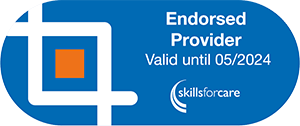What will the latest CQC proposed strategy mean for your staff and are they currently equipped?
At time of writing this article, CQC are asking for feedback through a consultation regarding changes to their approach. The nature of the consultation means that the specific details have not been reached, however the basis for the review is for the CQC to change how they regulate to improve care for everyone, which is a topic that won’t be going away. So how are you currently training your staff? Does that process get you the outcome you are looking for? What will the proposed approach mean for a provider and how can you prepare your staff now?
The four themes covered in the CQC proposal are:
People and Communities
Greater importance to be placed on people’s experiences to shape the regulation process. The focus will look to incorporate public interest and local communities. Care staff need to have an understanding of how the care setting fits in with the wider community, the interaction and how daily internal activity has an impact on reputation and standards both internally and externally of the care setting. By installing high standards within your staff training, quality would cascade throughout your organisation and also into the community.
Smarter Regulation
Through the use of digital solutions and more efficient processes, CQC aim to become more flexible and dynamic and will expect care providers to do the same. Care providers will be expected to present a constant flow of information to the CQC. By creating a more efficient process, it will become easier to identify areas of weakness and implement improvements, which will make the rating system more relevant and accurate. By using digital systems and competency checks you will arm yourself with the data and flexibility needed to build towards smarter regulation.
Safety Through Learning
The expectation will be that learning and improvement are the primary responses to all safety concerns in all types of service. CQC are being very clear by saying “when safety doesn’t improve, and services don’t learn lessons, we’ll take action to protect people”. As one of the Key Lines of Enquiry, it is widely regarded that Safety is the hardest to achieve an outstanding rating in. To improve the culture around safety, the culture around training needs to be improved as well. Care providers could create a programme of learning around safety rather than wait and be reactive to a situation after someone’s safety was put at risk.
Accelerating Improvement
CQC will be looking to accelerate improvement by targeting priority areas that need the most support and resources. This will apply to individual services as well as across the care sector. It is very likely this will be achieved through the use of digital systems and the ability to work collaboratively. By improving your staff as individuals, the collective become stronger. The CQC are looking to improve care providers as individual organisations in order to strengthen the collective group of providers across the sector. Have you set your individual staff up to succeed or is there something else you could do to help them?
Training will become an even more important tool to equip staff with the knowledge and understanding of where the care setting sits within the community, improve the culture around safety and follow processes that encourage improvement.
We can help you to streamline your staff training in a digital format that will help equip your staff to work in accordance with the themes laid out above and more importantly with a view to improve care for everyone. Talk to us today to talk through what programmes of learning your staff require and how we can reduce some of the burden on you. Contact us on 01823 33 22 00 or email info@redcrier.com.
Find out about our eBox digital training platform and eCompetency here.








